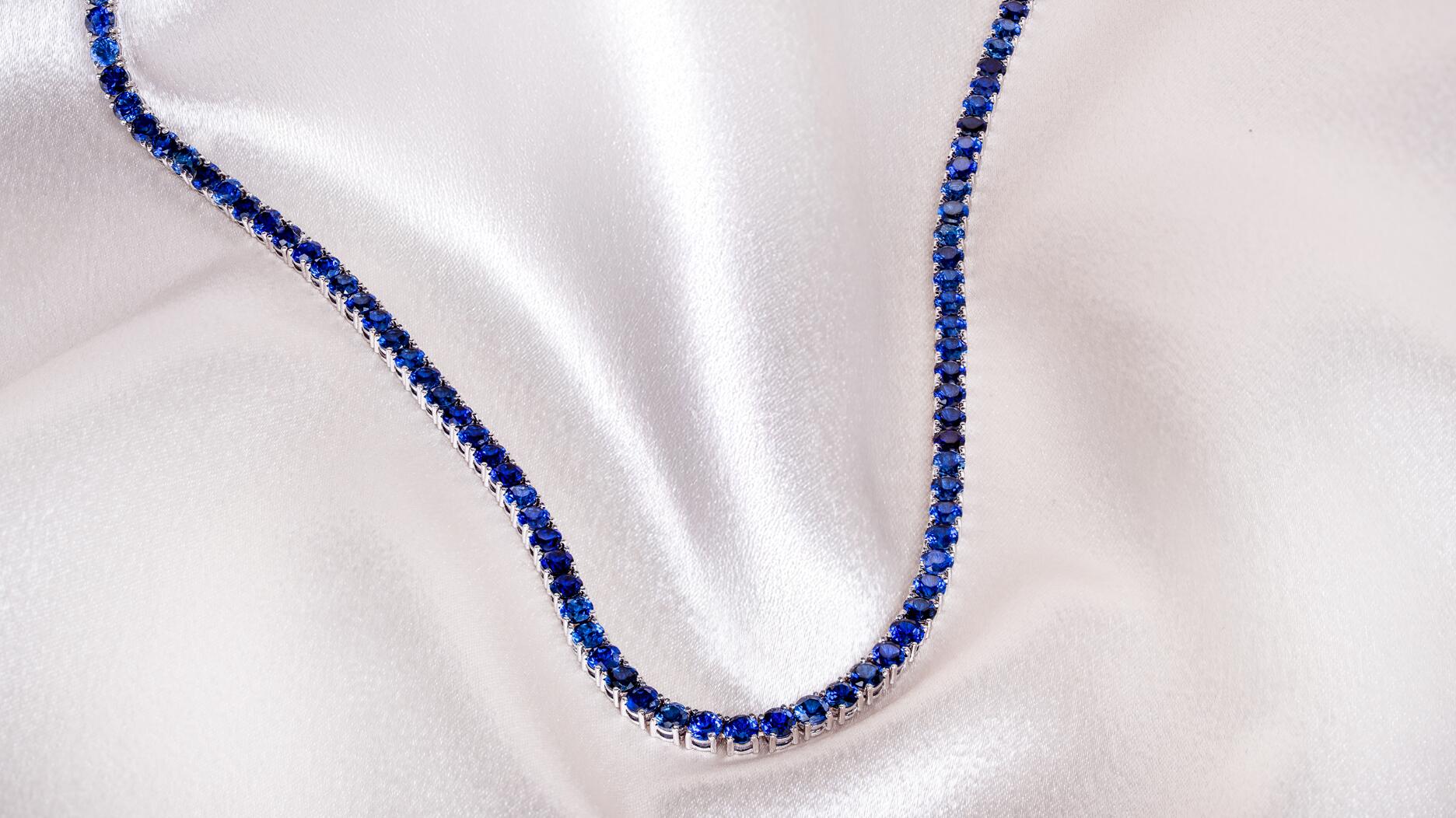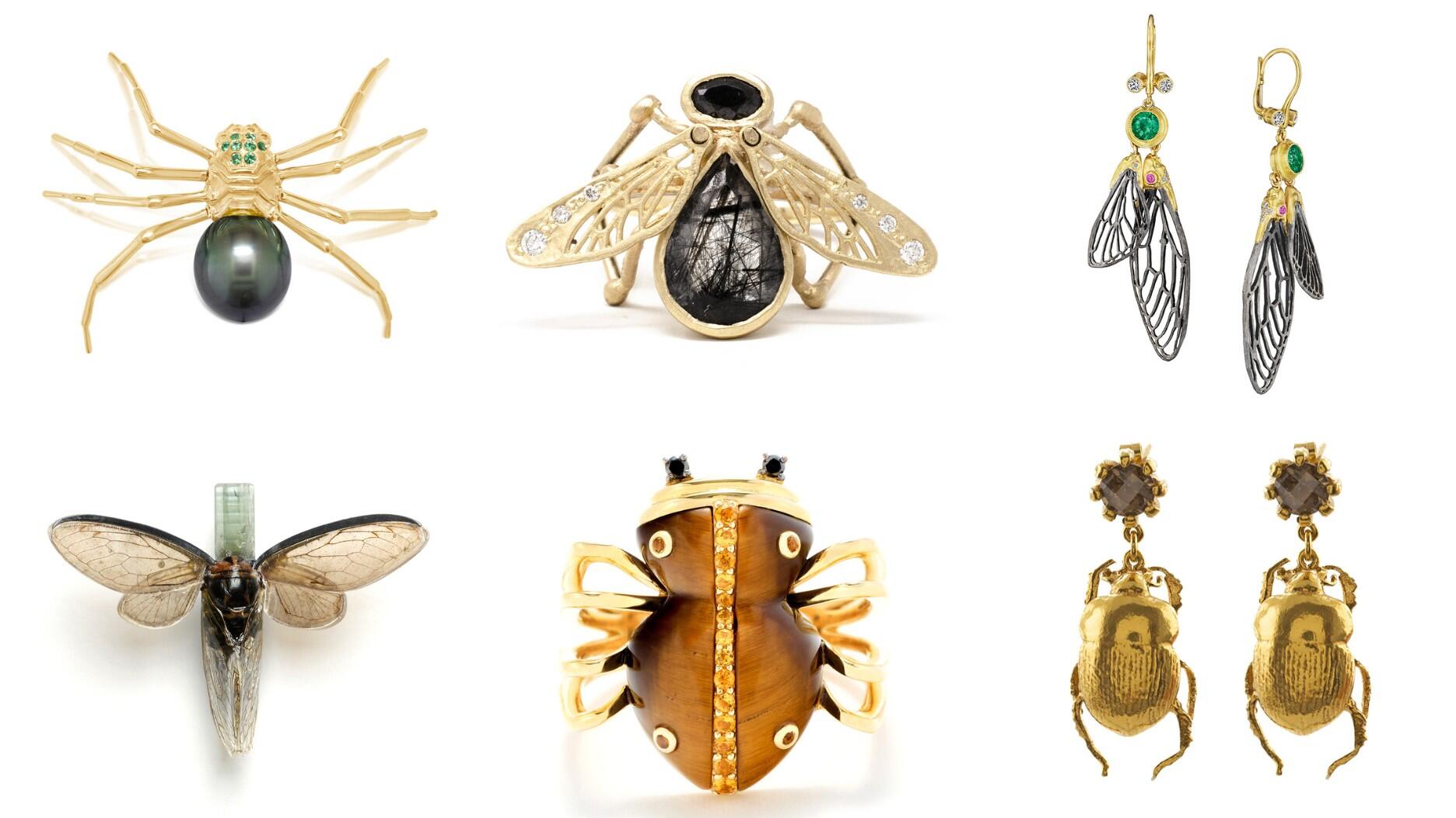Q&A: Signet CEO Gina Drosos on Natural Diamonds
Drosos shared her top takeaways from a recent Botswana trip and her insights into the natural diamond market.

She explored Debswana’s Jwaneng mine, visited Signet’s factory and its employees, and met up with De Beers CEO Al Cook.
Last month, I spoke with Drosos about her experience in Botswana as well as her takeaways about the natural diamond market.
This interview has been edited for length and clarity.
Lenore Fedow: So, what brought you to Botswana? I know Signet has a factory there.
Gina Drosos: We do have a factory there and we have really been investing in technology and training in our factory. As a result of that, we’ve been able to upskill the people who work in our factory and create a much better output from the factory as well.
I was there in the factory five years ago and, during COVID, we continued to make investments, but I wasn’t really able to travel and go as much as I would have wanted to.
I was just very excited to go down and see my team there and see the impact of those investments—the culture scores of that facility are very high—and to really understand all the great things they’re doing.
I do that a lot. I try to go to our different locations and take best practices and things that are going well and see how I can spread those around the company.
The other reason I went is we have a good relationship with De Beers. (Signet Jewelers is one of six retail sightholders globally.)
I have been to the Jwaneng mine before, but I hadn’t been there with some of the new leadership of De Beers and I hadn’t taken some of my key leaders. I had talked with Al Cook and we agreed that it would be a great opportunity for us to get some of our top leadership team together and look at our businesses and the industry end-to-end.
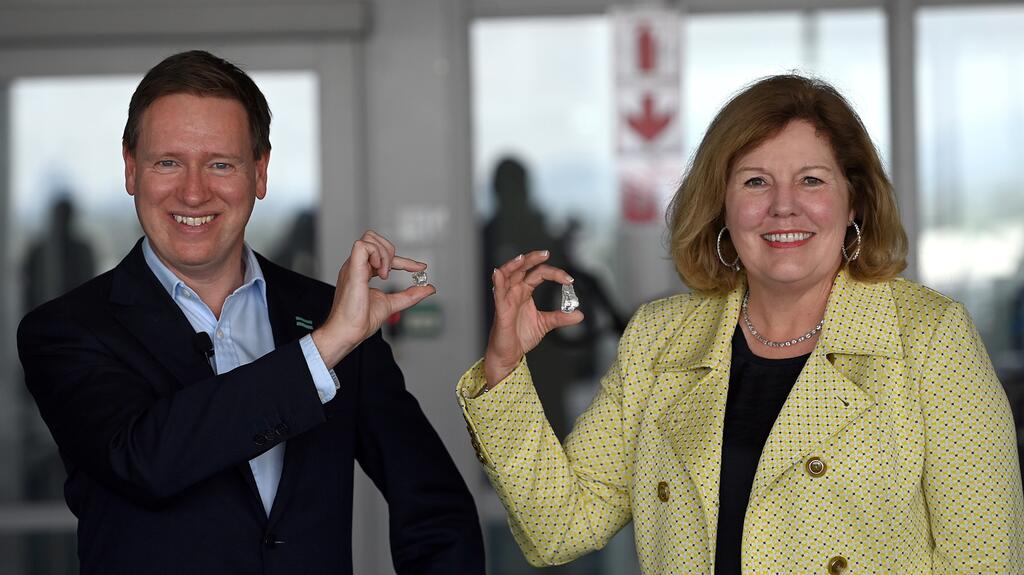
LF: I imagine he must have some interesting insights into the country, and I know DeBeers has been promoting natural diamonds through its revamped “A Diamond is Forever” campaign. What do you think Signet has to add to that conversation in terms of promoting natural diamonds to its customers?
GD: Well, we sell predominantly natural diamonds. So even as lab-created diamonds have become available, we have applied the very same strict responsible sourcing protocol and quality standards to those diamonds. And we have offered those, as the world’s largest diamond retailer, to our customers as a choice. But as we’ve had that choice, still the vast majority of the diamonds that we sell in our jewelry are our natural diamonds.
So, we have a lot in common—the desire to tell the story to our customers about all the good that diamonds do in the world. And Botswana is, I think, the heartbeat of where that happens.
LF: When we talk about natural diamonds, I know some people I speak with outside of the jewelry industry, they still have this negative connotation attached, whether their concerns are about the environment or workers. And, from my understanding, Botswana tells a different story and has seen a positive impact from natural diamonds.
GD: I think in the absence of new information, people play old tapes. It’s true about everything. We all only know what we knew then unless we have better information now.
And so, I do think [we should make] sure that diamonds are mined in a responsible way by people who are responsible and that worker conditions are excellent, so we can be clear that when you’re buying this ultimate symbol of love, like a diamond engagement ring, you can know everything about that has been good all the way back.
So, one of the questions that people have is, “Well, is it good for the environment to dig holes in the ground like a mine?”
The fact of the matter is that before the first shovel of dirt starts at the beginning of a diamond mine, there is a decision that DeBeers and the government of Botswana make about what’s the end point.
So, there’s one mine that has been producing diamonds for some period of time now, and it still has some future longevity of more diamonds that can be mined there. De Beers and the government of Botswana have worked together to say, “Hey, how are we going to use this project to create jobs?"
And they also decide what it’s going to be when the diamond mine is completed. So, they’re responsibly using the natural resources to make life better for the people of the country.
And then at the end of it all, this particular mine will be filled back in and become a game reserve, which then creates an opportunity for more advancement in Botswana through tourism.
So, is digging a hole in the ground a bad thing?
I’d think if you don’t know the whole story, you might think so, but if you understand the story, you say “no, that’s awesome.”
The responsibility of jewelers like us and independent jewelers all over the country is to educate and let people know that what they might have in their head just isn’t the way things are now.
LF: I think that’s something some of the independent jewelers struggle with. They want people to feel good about what they’re buying. What do you think is the best way to tell a customer that story of the positive impact their purchase of a natural diamond can have?
GD: We tell our story through what we call “the Signet Promise.” So, we promise that all of our products, whether that’s gemstones, diamonds, or metals, are responsibly sourced. And we use our scale for good to advance human rights while preserving our planet.
We came up with that because Signet is a company that takes ESG very seriously. We have been part of developing UN Sustainable Development Goals. We have those around responsible sourcing and around taking care of the environment.
We tell that to our customers. We actually post it on the wall of our stores. We have it on our website, and if someone asks us in a store when they’re buying, that’s what we say to them. We say we have a responsible sourcing protocol.
We care so much about this for the industry that we’ve made it open source. We’ve been doing this for more than a decade.
And so, we know we can promise to you that all of our products are responsibly sourced and do good in the world.
LF: Overall, people want to feel good about the jewelry they’re buying. I think jewelry purchases should always be fun. That’s the point. But then, you also do have that obligation to educate your customer on what they’re buying.
GD: Gen Z is a very important customer group to us because they are the generation of people who are primarily the generation who are getting engaged now. And they don’t just feel that way about diamonds. They feel that way about food, they feel that way about supporting companies that treat their employees well and all of that.
Consumers get a big vote with their pocketbook or, in this case, their Venmo or their Apple Pay. But they [also] get a big vote on what kind of company and products they want to support.
And so that’s great for us, we think, because we totally agree. We are happy to open wide our doors and say, hey, come help yourself and see the kinds of good things that we are doing, not just for our own employees here but for a country like Botswana and to help influence our industry.
“Customers understand that [a lab-grown diamond] is not the same as a natural diamond. It’s not rare, it’s not special and unique in the same way, but it’s affordable. At some points in people’s lives or in certain economic times, that becomes a higher priority.” — Gina Drosos, Signet Jewelers
LF: That brings me to my next question, which is about lab-grown diamonds. They’ve been the talk of the town since I started here five years ago. It can be a little bit of a polarizing topic for some people.
As a retailer that offers both options to customers, do you feel like lab-grown diamonds are the threat to natural diamonds that some in the industry would make them out to be? Or do you feel there’s room for everybody?
GD: First and foremost, I would say that we are a very consumer-driven company. Our choices on our inventory assortment that we carry are highly data-based, well researched among consumers. We are increasingly using data and analytics and AI to predict which products will sell the best in which stores.
When you walk into a Kay anywhere in the country, it has the perfect assortment for that Kay and it’s not the same as a different Kay that might even be in the same town.
We began to carry lab-grown diamonds because customers were asking for them and they were interested in it.
I think, in fairness, it’s one of the biggest innovations in our category in a long time in many years. In that context, it’s great because innovation drives more innovation. And that’s what makes jewelry an exciting category to be in.
Consumers want options, [especially] in a time like we’ve had over the last roughly two years where mid- and lower-income customers have been challenged by high inflation, rising gas prices, [and] high rent.
Having the choice of lab-created has been a really great thing for those customers. And they understand that it’s not the same as a natural diamond. It’s not rare, it’s not special and unique in the same way, but it’s affordable. At some points in people’s lives or in certain economic times, that becomes a higher priority.
[Following the COVID-19 pandemic], we’ve seen a dip in the number of people getting engaged, so there’s been a number of different kinds of challenges on that front.
But, as that begins to come back, which it is, and as the economy and customer confidence continues to improve, which it is, then I think that people will begin to see lab-grown diamonds more as a choice for self-purchase for fashion jewelry.
I think that people will more naturally, when they have a little bit more flexibility in their budget, gravitate back to the specialness of a natural diamond for celebrating those really meaningful occasions in your life.
It might be a long-winded way to answer that. Yes. I do think that there’s a role for both. I think the growth of lab-created was sort of the right product at the right time. Things will normalize as we go into the next several years ahead.
LF: My last question for you, was there one takeaway overall from your trip that you felt like you really needed to share with your team?
GD: One [takeaway] is what we were just talking about. A diamond is super special. There’s planning and investment. [A diamond] was formed in the tubes of prehistoric volcanoes billions of years ago.
And there’s just something romantic about a diamond that matches the romance of expressing love for jewelry.
I was really struck by that, being in one of the largest and most valuable mines and holding rough diamonds in my own hand. And seeing the size of the truck, by the way, which is about two stories tall and driven by a woman in Botswana who’s bringing those out of the ground.
I saw the mine, I saw the diamonds coming out. I held the rough stones.
I was in our factory. I saw how we map it to get the best possible, most beautiful diamond or combination of diamonds out of each piece of rough. I saw the care my people take when they’re doing that mapping, the quality control.
I saw the training room where we are training people to be better cutters and polishers of diamonds, which by the way, contributes to their income.
I think about my own jewelry and how every piece of it tells a story. And there’s a depth to that story that I was struck by. So, the specialness of natural diamonds I think was one big takeaway.
I took a lot of pictures and I posted them on our intranet to share with my team as much as I could that feeling of excitement.
And then the other [takeaway] we also talked about, which is I’m so proud of the work we are doing in Botswana and the work we are part of with the government and with our partners like De Beers. And it’s not just Botswana. There’s a lot of good going on in Namibia and in Angola as well, but Botswana is just a super-great example of that. So anyway, those two things were really meaningful aspects.
LF: It sounds like a really special experience. I’d love to go see that for myself someday.
GD: Yeah, absolutely. Some of my team members have been working in our industry for a while, but they work in different areas, maybe in finance, maybe in merchandising, but they have not had the opportunity [to go.] And I can tell you, they walked away with the same kind of wow feeling about both of those two things.
LF: Was there any last thing you wanted to share or thought was interesting?
GD: If there’s one message I would leave you with, it’s a message of optimism about the category we all love so much, this jewelry business we’re in and about the way that we can work together to better tell the stories of the love that diamonds inspire all the way from the mine to market.
The Latest

Set in a Tiffany & Co. necklace, it sold for $4.2 million, the highest price and price per carat paid for a Paraíba tourmaline at auction.

The jeweler’s “Deep Freeze” display showcases its iconic jewelry designs frozen in a vintage icebox.

Take luxury gifting to new heights this holiday season with the jeweler’s showstopping 12-carat sphene ring.

How Jewelers of America’s 20 Under 40 are leading to ensure a brighter future for the jewelry industry.

This year's theme is “Unveiling the Depths of the Ocean.”


In its annual report, Pinterest noted an increase in searches for brooches, heirloom jewelry, and ‘80s luxury.

Starting Jan. 1, customers can request the service for opal, peridot, and demantoid garnet.

Roseco’s 704-page catalog showcases new lab-grown diamonds, findings, tools & more—available in print or interactive digital editions.
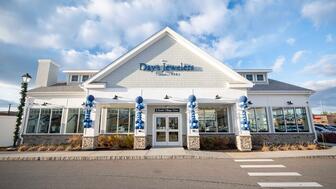
The 111-year-old retailer celebrated the opening of its new location in Salem, New Hampshire, which is its third store in the state.
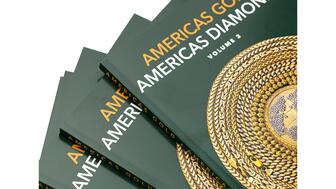
The new catalog features its most popular chains as well as new styles.
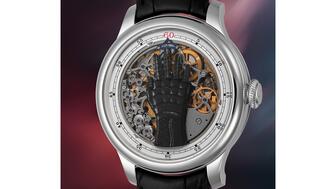
The filmmaker’s personal F.P. Journe “FFC” prototype was the star of Phillips’ recent record-setting watch auction in New York.

The new location in the Design District pays homage to Miami’s Art Deco heritage and its connection to the ocean.

Inflations, tariffs, and politics—including the government shutdown—were among consumers’ top concerns last month.
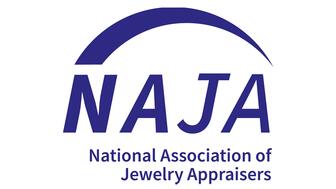
“Longtime favorite” presenters, as well as first-time speakers, will lead talks and workshops at the annual event in Tucson next year.
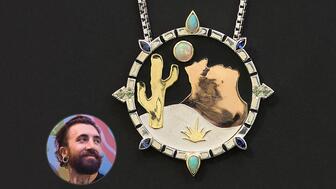
Silas Smith of Meridian Metalworks won the challenge with his pendant that blends Australian and American landscapes.
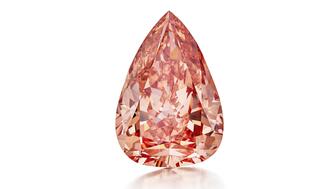
The sale of the 31.68-carat, sunset-hued stone was part of Sotheby’s first series of events and auctions in Abu Dhabi.

Most customers who walk into your store this month have made up their minds. Your job is to validate their choice, Emmanuel Raheb writes.
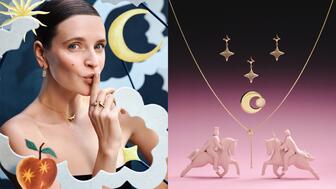
The collection features characters and motifs from Ukrainian folklore, including an enchanted mirror and a magic egg.
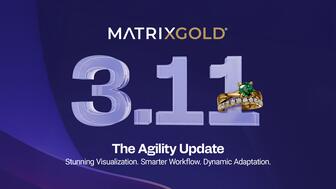
MatrixGold 3.11, the newest version of the jewelry design program, offers more flexibility, precision, and creative control.

The pavilion will be part of the 2026 JA New York Spring show, scheduled for March 15 to 17.

Kadet, a 1994 National Jeweler Retailer Hall of Fame inductee, helped grow the family-owned retailer in the Chicago area and beyond.
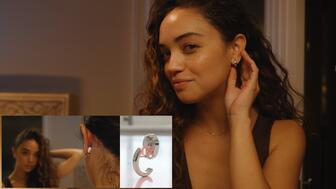
Billed as the world’s smallest wearable, Lumia Health’s new smart earrings have a health tracker subtly embedded in the back.
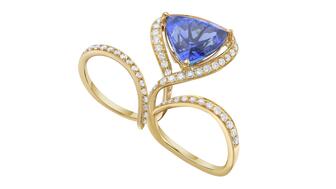
Don’t let those with December birthdays feel blue. Help them celebrate their month with blue zircon, turquoise, and tanzanite.
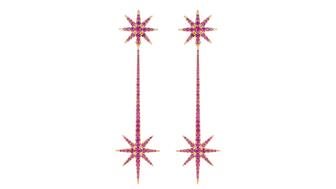
The new pink sapphire version of the piece dances with its wearer in the brand’s “Icons After Dark” holiday campaign.

A choice that’s generated a lot of commentary, Pantone says “Cloud Dancer” marks a fresh start and encourages relaxation and creativity.
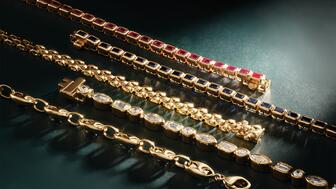
The manufacturer’s holiday campaign features a gift guide filled with trending designs and jewelry that can be personalized.
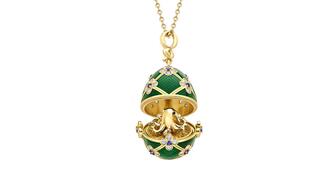
The man was charged with theft, accused of ingesting the necklace while in a jewelry store in Auckland, New Zealand.












